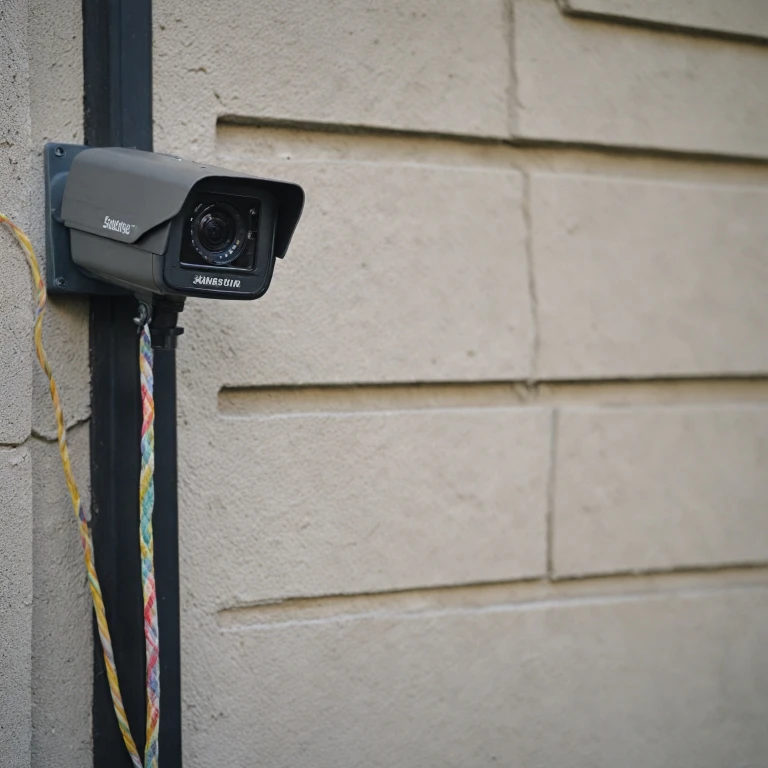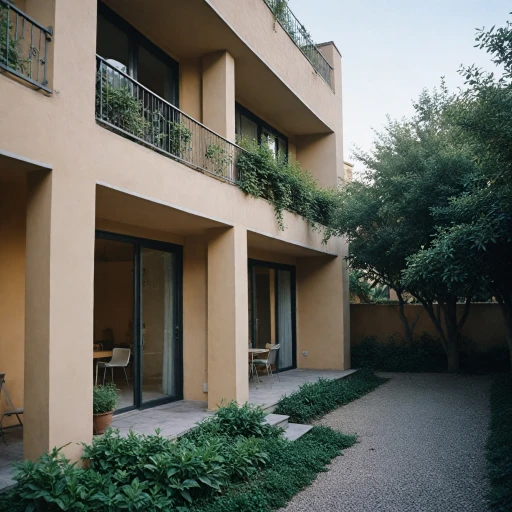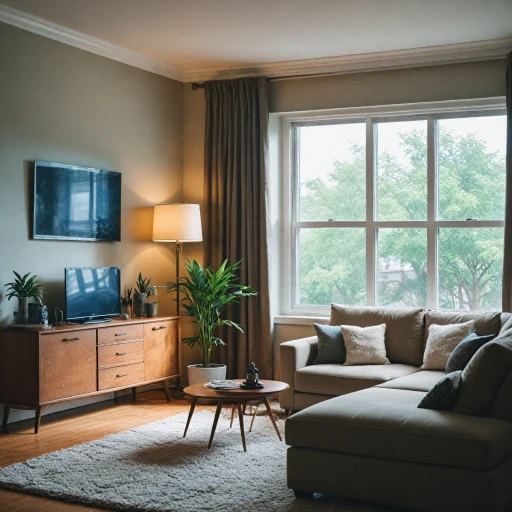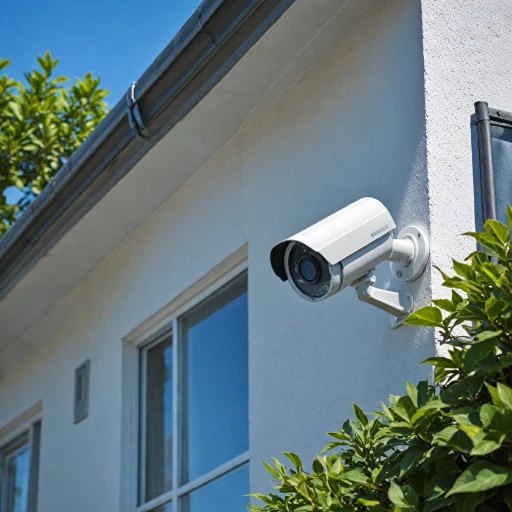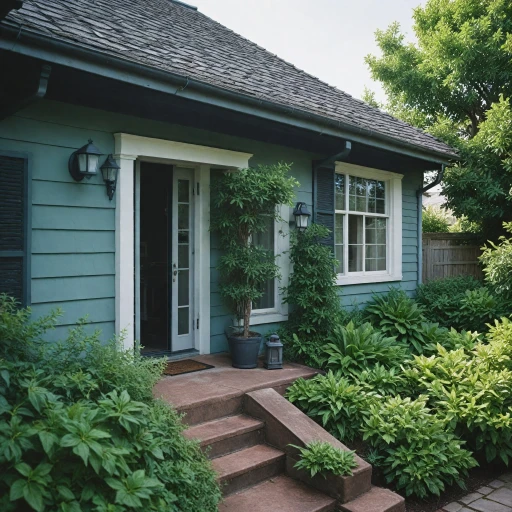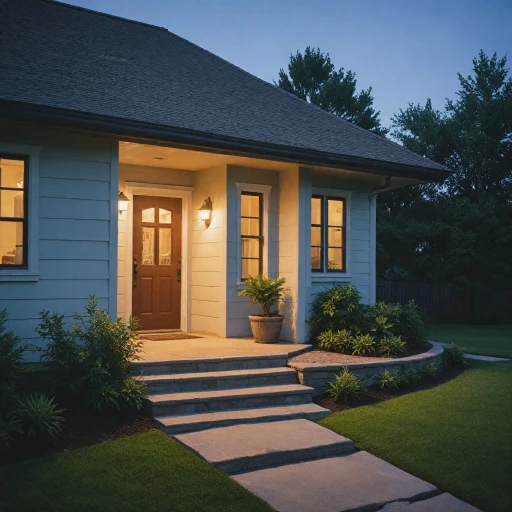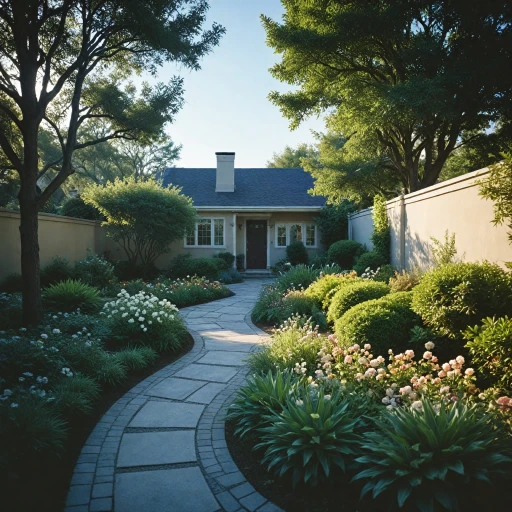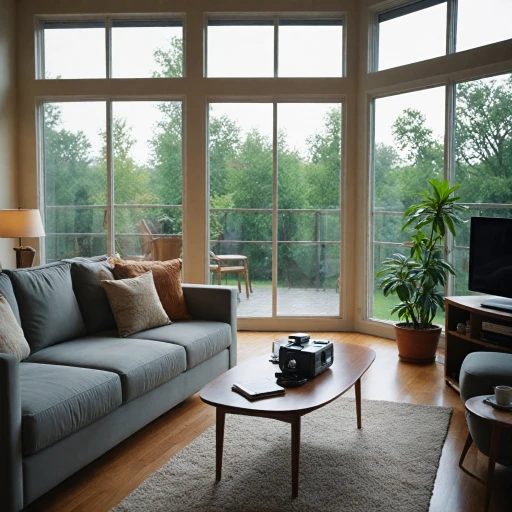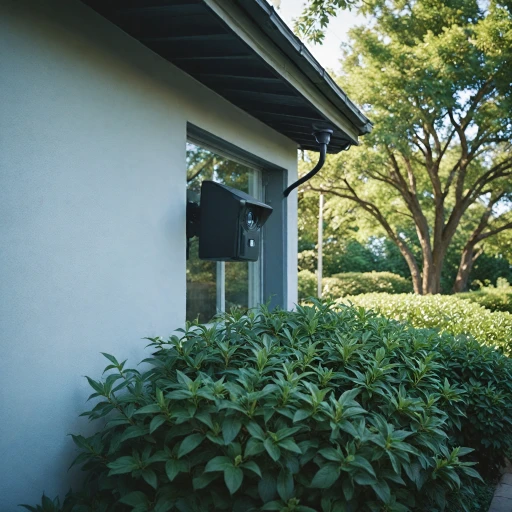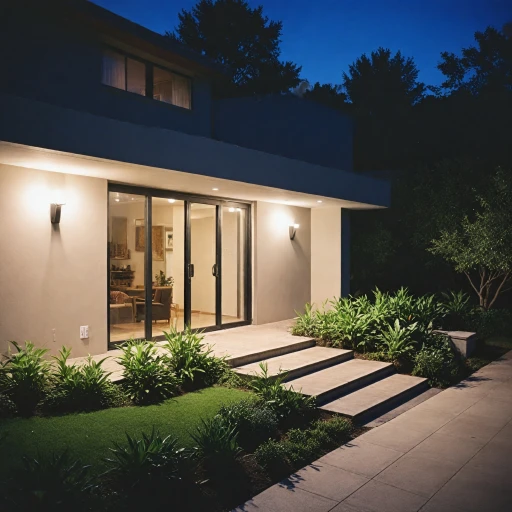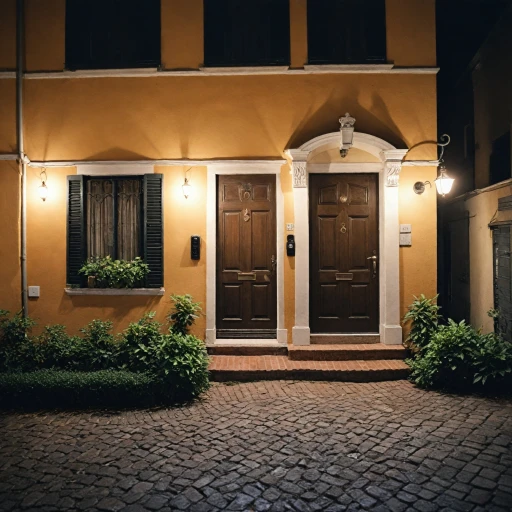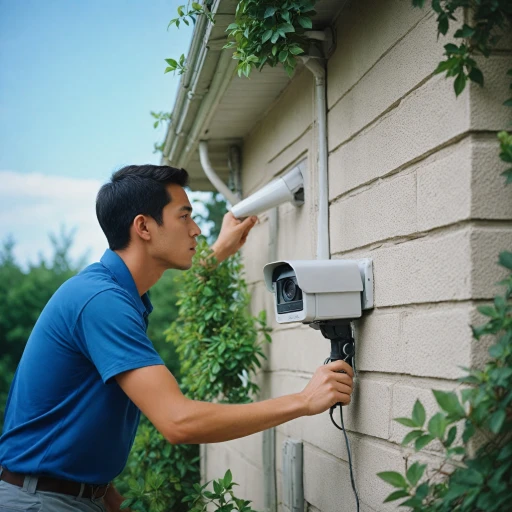
The Basics of RG59 Cable
The Foundation of Security Camera Wiring
RG59 is a coaxial cable that plays a crucial role in the infrastructure of security camera systems. Originating from the need for efficient video transmission, this type of coaxial cable is known for its solid durability and consistent performance. Composed of a copper conductor, RG59 is specifically designed to handle the analog video signals typical of CCTV camera setups. Its copper core ensures excellent conductivity, which is essential for clear video quality and consistent signal transmission.
Characterized by its 20AWG solid copper conductor, RG59 is engineered to meet the needs of various types of security systems. The coaxial cables come with a PVC jacket, adding a robust layer of protection against physical damage. This makes them suitable for different environments, including enhancing home security with outdoor camera setups.
RG59 is often paired with a power cable, forming what’s referred to as siamese cables. This combination allows for the efficient routing of both power and video signals to cameras, minimizing the complexity of cable management. The dual nature of siamese cable aids in simplifying installations, especially in extensive camera network setups. Coaxial cables like these are integral in ensuring that security cameras function optimally, thus providing peace of mind in surveillance undertakings.
Advantages of Using RG59 Cable for Security Cameras
Boosting Security Camera Systems with RG59 Cables
Opting for RG59 cables in your home security systems comes with various advantages. This specific type of coaxial cable is favored for its balance of flexibility and durability. Its composition, usually featuring a solid copper conductor, ensures efficient data transmission, which is crucial for maintaining high-quality video feeds from your security cameras.
- Video Quality: RG59 coaxial cables maintain the integrity of video signals over moderate distances, making them suitable for most residential applications. The bare copper conductor enhances this capability, providing a reliable medium for video transmission.
- Dual Functionality: These cables are often used in a siamese configuration, which combines both video and power cables into a single sheath. This not only reduces clutter but also simplifies the installation process, as you only need to run one cable per camera, rather than separate cables for video and power.
- Compatibility: The coaxial design of RG59 cables is widely compatible with CCTV systems, allowing you to use standard BNC connectors to hook up cameras effortlessly. This versatility extends to various camera types and models, adapting easily to different setups.
- Cost-Effective: Bulk cable options for RG59 are usually available, making it a cost-effective choice for installing or upgrading home security systems. Its durability helps reduce maintenance expenses, as it can withstand the wear and tear of most environments.
For those contemplating an upgrade or a new installation, considering systems enhanced with Eufy PoE cameras might also be beneficial. While PoE setups are different from coaxial configurations, they offer their distinct set of advantages, such as easy scalability and flexibility in camera placement.
RG59 cables prove to be a durable and efficient choice for those aiming for a robust home security setup, whether you're using them alongside CCTV or enhancing them with the latest PoE technology. Their adaptability and reliability are central to maintaining a high standard of home protection.
Comparing RG59 Cable with Other Cable Types
Assessing RG59 Cable Amongst Alternatives
When it comes to choosing the right cables for your home security cameras, RG59 cable emerges as a pivotal option due to its design and function. Yet, comparing it with other cable types can help clarify why it holds a significant place in the market. RG59 coaxial cables, often preferred for CCTV systems, incorporate a copper conductor that supports high-quality video transmission. Compared to other types of coaxial cables, such as RG6 and RG11, RG59 is slightly thinner and offers less attenuation over short distances, making it more suitable for residential security camera systems.- Video Transmission: While RG59 cables effectively transmit video signals, ensuring clear images from both analog and digital cameras, RG6 cables provide better performance over longer distances due to their thicker insulation and superior shielding.
- Power Delivery: RG59 is often used in Siamese cable configurations, combining video and power cables. This setup allows the cable to simultaneously support power delivery and video signal transmission, which is advantageous for security systems requiring both functionalities.
- Flexibility in Installation: Due to their slightly smaller diameter, RG59 cables are more flexible during installation—suitable for tight spaces. Compared to bulkier cables like RG11, RG59's easy handling is a practical choice for complex camera systems setups.
Installation Tips for RG59 Cable in Home Security Systems
Essential Tips for Installing RG59 Cable in Home Security Systems
When it comes to setting up security camera systems, the installation of RG59 cable is crucial for the optimal performance of your video surveillance. As you embark on this installation, keeping a few essential tips in mind will ensure smooth and effective connectivity.- Choose the Right Mix: When deciding between the various types of cables, consider using a RG59 siamese cable. This blend combines coaxial and power cables, making it convenient for CCTV applications, providing video through a coax cable and power for the camera systems.
- Focus on Quality Materials: Opt for cables with a solid bare copper conductor to maintain signal integrity over long distances. AWG solid cables are recommended as they offer a reliable connection for your security camera systems.
- Shielding Matters: Ensure your RG59 cable features proper shielding. An awg shielded cable with a quad shield design can help reduce interference, enhancing the quality of the CCTV footage.
- Correct Connectors: Use the appropriate connectors like BNC male connectors for secure connections. These are designed to fit RG59 coaxial cables and help in achieving stable video signals.
- Plan the Route Wisely: Plan the cable route carefully to minimize bends and interference points. This not only prolongs the life of the cables but also ensures consistent video and power transmission.
- Consider Environmental Factors: If you're deploying your security system outdoors, select a cable with a PVC jacket that offers resistance to UV radiation and water. For underground installations, a direct burial-rated bare cable will better withstand harsh conditions.
Common Issues and Troubleshooting with RG59 Cable
{"" : "Identifying and Resolving Common Issues with RG59 Cable in Home Setups" ,"
" : "When it comes to setting up security camera systems, particularly those using RG59 coaxial cable, it's not uncommon to encounter certain challenges. Understanding these can help ensure your system operates efficiently and reliably.", "
" : "One frequently faced issue is signal degradation over distance. RG59 cables, with their 20 AWG copper conductor, are somewhat limited in the range they can support, typically up to 750 feet for video signals. Beyond this, signal quality may deteriorate. To counter this, consider using amplifiers to boost signal strength, or choose appropriate cable types for longer distances.", "
" : "Poor connections are another common issue, often due to improper attachment of BNC connectors. Ensuring a solid connection between the coax cable and BNC male connectors is crucial. Compression fittings are generally more reliable than crimped ones as they provide a firmer attachment. Always check the BNC connections for corrosion or wear over time, especially if you have direct burial installations.", "
" : "Interference remains a concern, especially in urban environments. While RG59 with a quad shield design offers enhanced protection against electromagnetic interference (EMI), it’s essential to avoid running cables parallel to high-voltage power lines. This step prevents crosstalk and maintains optimal video quality.", "
" : "Inadequate power delivery, particularly with Siamese cables, can affect camera performance. A security camera needs steady power, so ensuring your power supply and power cables are up to the task is key. Opt for rated bare copper conductors to mitigate voltage drop over long distances, which is more likely if lower gauge wires are used.", "
" : "Identifying breaks or damage in the cable is another challenge. The PVC jacket of coaxial cables is designed to protect against physical damage, but wear and tear can still occur. Frequently inspect cables for any visible damage, especially in areas exposed to the elements or potential physical impact.", "
" : "By staying vigilant and addressing these common issues, you can maintain the integrity and efficiency of your security camera systems, ensuring they serve their purpose of safeguarding your premises without hiccups.
Future Trends in Security Camera Cabling
Emerging Trends in Security Camera Cabling Technology
The security industry is continuously evolving to provide more efficient, reliable, and user-friendly solutions. As security cameras advance, so do the cabling systems that support them. One of the significant trends in security camera cabling is the integration of advanced materials and technologies to enhance performance and durability.- Improved Materials: Modern cables are increasingly featuring advanced materials like AWG solid copper conductors and rugged PVC jackets. These materials ensure better signal integrity and longer lifespan, especially for direct burial applications where environmental factors can be challenging.
- Higher Bandwidth Requirements: As video resolutions increase with 4K and even higher technologies, the demand for cables like RG59 that can support these bandwidths is rising. Quad shielded coaxial cables are gaining popularity because they offer enhanced signal protection and support for high-definition video formats.
- Hybrid Cables: The use of Siamese cables, which combine video and power cables into one bundle, remains beneficial for simplifying installation processes. They reduce clutter and offer a neat solution for powering security cameras simultaneously providing video transmission.
- Industry Standardization: As technology evolves, efforts are being made towards standardizing cable types in security systems to streamline installations and reduce confusion. This shift encourages manufacturers to develop products that meet universal standards, ensuring compatibility across various devices and brands.
- Advanced Connectors: The evolution of connectors such as BNC male connectors is also noteworthy. They now feature design enhancements for better connectivity and durability, which are essential for maintaining reliable video feeds in complex CCTV setups.
- Sustainability Efforts: There is a growing focus on sustainability, prompting manufacturers to improve the eco-friendliness of their products. This can include recyclable materials and energy-efficient solutions, impacting how cables are produced and disposed of.

